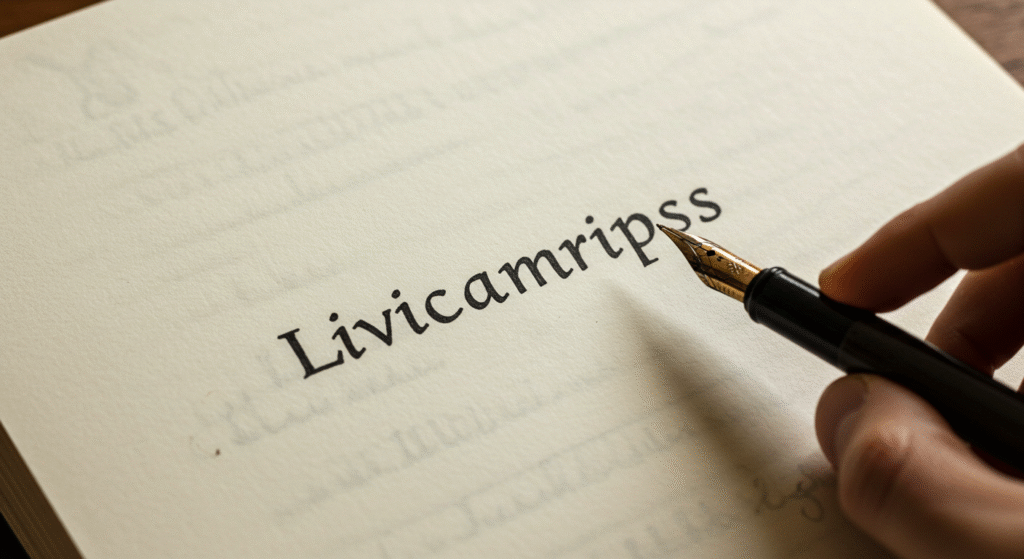Introduction
In the ever-evolving world of digital media, Livcamrips has become a term that sparks curiosity among online communities. Whether you are a content creator, a tech enthusiast, or simply a consumer of live-streamed material, you have likely come across the concept of Livcamrips in one way or another. At its core, Livcamrips refers to the process of capturing, storing, and repurposing live-streamed video content from digital platforms. As live streaming continues to grow at an exponential pace, fueled by platforms like Twitch, YouTube Live, and various adult or entertainment streaming services, the demand for capturing and reusing this type of content has also surged.
The rise of Livcamrips highlights an important shift in how digital audiences interact with real-time content. Traditionally, live streams were thought of as temporary and fleeting—events that happened in the moment and disappeared once the stream ended. However, as technology has advanced, methods for recording these live broadcasts have become increasingly sophisticated. Livcamrips plays a central role in this shift, enabling audiences to preserve and replay live content that would otherwise vanish. This not only has implications for personal entertainment but also touches on broader issues like copyright, fair use, and the preservation of digital culture.
For content creators, Livcamrips presents a double-edged sword. On one hand, it can broaden exposure and extend the life cycle of a performance or broadcast. On the other, it raises concerns about unauthorized use, piracy, and monetization. This tension has sparked debates within online forums, legal communities, and the media industry at large. By understanding what Livcamrips entails, how it is used, and what challenges it introduces, individuals and organizations can better navigate the digital landscape. This article explores Livcamrips in depth, shedding light on its origins, functionality, advantages, and potential drawbacks—all while offering a balanced look at its role in the modern online ecosystem.
What Exactly Is Livcamrips?
Livcamrips refers to the act of capturing live-streamed video content in real time or shortly after its broadcast, saving it for offline use or redistribution. While the practice can be technical, it essentially involves recording the visual and audio feed of a live event and converting it into a file format that can be stored, edited, or shared later. The term is most commonly associated with online entertainment and live interaction platforms where events are not permanently archived, making Livcamrips the only way to revisit certain broadcasts.
For casual viewers, Livcamrips may simply be a way to rewatch favorite performances, gaming sessions, or discussions without relying on internet connectivity. However, on a larger scale, Livcamrips has fueled discussions about content ownership and the blurred line between personal use and public redistribution. Much like the days of recording TV shows on VHS tapes, Livcamrips reflects humanity’s ongoing desire to capture and relive moments, even in a digital-first age.
The Technology Behind Livcamrips
At a technical level, Livcamrips often relies on software tools that interface with streaming protocols, screen capture methods, or specialized recording solutions. These tools can range from simple applications that record a computer’s display to advanced programs that extract video data directly from streaming servers. With internet bandwidth improving globally, high-definition rips of live events are now more accessible than ever.
Compression algorithms also play a major role in making Livcamrips practical. Without efficient video compression, storing hours of high-quality streams would require enormous amounts of storage space. Modern formats such as MP4 and MKV, combined with codecs like H.264 or H.265, allow Livcamrips to maintain clarity while reducing file sizes. This technological backbone is what has transformed Livcamrips from a niche practice into a widespread phenomenon.
Why Do People Use Livcamrips?
The motivations for using Livcamrips vary widely. For some, it is about convenience—being able to watch a live show or game at a later time without worrying about missing it. For others, it becomes a form of archiving, especially when certain streams are limited-time events that will not be made available again. This sense of exclusivity can drive viewers to capture content while it’s available.
On the other hand, Livcamrips is sometimes used to distribute content across forums, social platforms, or private communities. While this can help creators reach wider audiences, it also undermines the intended exclusivity or monetization strategies of platforms. Thus, Livcamrips sits at the intersection of audience demand and creator control, with both sides having valid arguments for their positions.
The Benefits of Livcamrips
For everyday users, Livcamrips can be immensely practical. A student might use it to capture an educational webinar for later study, or a fan might keep a recording of a favorite artist’s one-time live performance. In these cases, Livcamrips serves as a tool for knowledge retention and personal enjoyment. It extends the lifespan of valuable content beyond its original broadcast window.
Additionally, Livcamrips can play a role in digital preservation. Just as libraries archive newspapers and broadcasts, individuals capturing live streams may unintentionally help preserve cultural or historical moments. From political debates to live news coverage, Livcamrips ensures that certain digital artifacts remain accessible even when platforms remove or restrict them.
The Risks and Challenges of Livcamrips
Despite its benefits, Livcamrips is not without risks. One of the biggest concerns is copyright infringement. Many streaming platforms include clauses in their terms of service that prohibit recording or redistributing content without permission. Users who engage in unauthorized Livcamrips could face account bans, legal repercussions, or penalties depending on jurisdiction.
Another challenge is the ethical debate surrounding Livcamrips. While some argue that personal use should be permissible, others believe that unauthorized redistribution harms creators financially and artistically. Balancing consumer freedom with creator rights remains one of the most contentious issues in the ongoing conversation around Livcamrips.
Legal Perspectives on Livcamrips
The legality of Livcamrips depends largely on context. Capturing a public lecture for personal study may fall under fair use, while distributing a ripped live concert without the artist’s permission likely constitutes infringement. Laws vary by country, but most jurisdictions emphasize the importance of respecting intellectual property rights.
Streaming platforms themselves have begun implementing anti-rip technologies to deter unauthorized recording. These include encryption measures, watermarking, and even AI-driven monitoring systems designed to detect piracy. While not foolproof, these efforts highlight how seriously the industry views the issue of Livcamrips.
The Future of Livcamrips
As streaming continues to dominate entertainment and education, Livcamrips will likely remain a point of discussion. With new technologies such as blockchain and decentralized storage, some believe future solutions may allow creators to maintain greater control while still offering audiences ways to revisit content legally. Subscription models with offline viewing options are already bridging this gap.
In the coming years, the perception of Livcamrips may evolve. It could become more accepted as part of digital archiving practices, or it might face stricter legal crackdowns. Either way, its existence underscores the changing dynamics of how society consumes and preserves digital content in an always-online world.
Conclusion
Livcamrips reflects the complex relationship between technology, audience demand, and creator rights in today’s digital ecosystem. It allows individuals to capture live moments, whether for convenience, preservation, or entertainment. At the same time, it challenges the traditional boundaries of intellectual property and raises important questions about the future of digital media consumption. For viewers, Livcamrips offers flexibility and accessibility. For creators and platforms, it represents both an opportunity and a threat.
Understanding Livcamrips means acknowledging its dual nature: a tool of empowerment for audiences and a potential obstacle for those trying to protect their creative work. As live streaming continues to expand across industries, finding a balance between personal use and fair compensation will be crucial. Whether embraced as a legitimate form of digital preservation or restricted as a form of piracy, Livcamrips is undeniably shaping the way we think about live content in the digital age.






